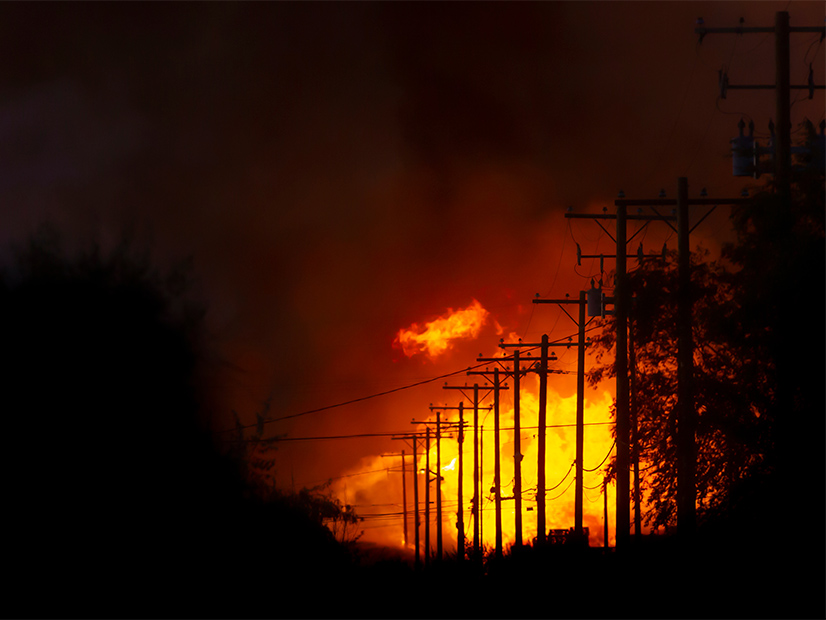
A California wildfire fund created by state lawmakers in 2019 could serve as a model for a similar nationwide fund, speakers said during a webinar July 22 hosted by Americans for a Clean Energy Grid (ACEG).
Assembly Bill 1054 of 2019 established the fund, which utilities may tap into to pay claims for damages resulting from a wildfire caused by utility equipment. Money in the fund comes equally from utility ratepayers and shareholders.
Pacific Gas and Electric, Southern California Edison, San Diego Gas & Electric and Bear Valley Electric are fund participants. The California fund is expected to grow to $21 billion. A bill creating a similar fund in Utah was signed into law this year.
While such a fund is possible for California, which ranks as the world’s fifth-largest economy, it might not be feasible for other states, said webinar speaker Riaz Mohammed with the Edison Electric Institute.
“We’re not sure that the financial wherewithal is there for a state-specific fund,” said Mohammed, EEI’s senior director of resiliency and environmental policy.
Mohammed said the institute is exploring the possibility of a national wildfire fund that would mix elements of California’s AB 1054 and the Price Anderson Act, which established a fund to pay members of the public harmed by a nuclear incident.
The idea would be to create a federal fund that does not preempt any state wildfire funds, he said.
Limiting Liability
EEI also is focusing on legislation that would limit utilities’ liability for wildfires.
Although inverse condemnation is a California law that views damages caused by a utility’s equipment to be a “taking” of private property even when negligence isn’t demonstrated, Mohammed said the concept has spread to other states.
“What we’re seeing across the country is that there’s really no distinction when it comes to wildfire damages or awards,” he said. “Inverse condemnation is what is being applied even if that’s not the law.”
Courts also have awarded punitive and pain-and-suffering damages in wildfire cases to people who have not been economically or physically harmed, according to Mohammed.
The key to a system for limiting liability would be a requirement for utilities to have a wildfire mitigation plan in place, he said. For those that do, one possibility would be sending wildfire claims to federal court, where damages would be limited, and bypassing the state courts. Mohammed said EEI is “kicking around” that idea.
Safety Certifications
Under California’s AB 1054, a fire safety certification is a central element. Without the certification, utilities still may pay into the fund and access it when needed.
But when it comes time to reimburse the fund, utilities with a safety certification are presumed to have acted prudently unless regulators determine otherwise, according to Melissa Semcer, principal consultant with Climate, Wildfire and Energy (CWE) Strategies. If they acted prudently, utilities can repay with 50% ratepayer funds and 50% shareholder funds, rather than repaying solely with shareholder funds, Semcer said.
Safety certification requirements in California include having a wildfire mitigation plan, safety culture assessments and evidence of making progress on previous plans. In addition, executive compensation must be based at least 50% on safety metrics.
“That is actually a game changer,” said Semcer, who previously was the deputy director of the California Office of Energy Infrastructure Safety.
Panelist Letha Tawney, a commissioner with the Oregon Public Utility Commission, said a wildfire fund raises societal issues.
“In an electric bill, you’re asking ratepayers to cover rebuilding from catastrophic wildfires,” she said. “Is that really what ratepayer bills should be doing?”
“And what does it mean for everyone who was still impacted by a wildfire, and it wasn’t utility caused? Where are they supposed to go?” Tawney added.


